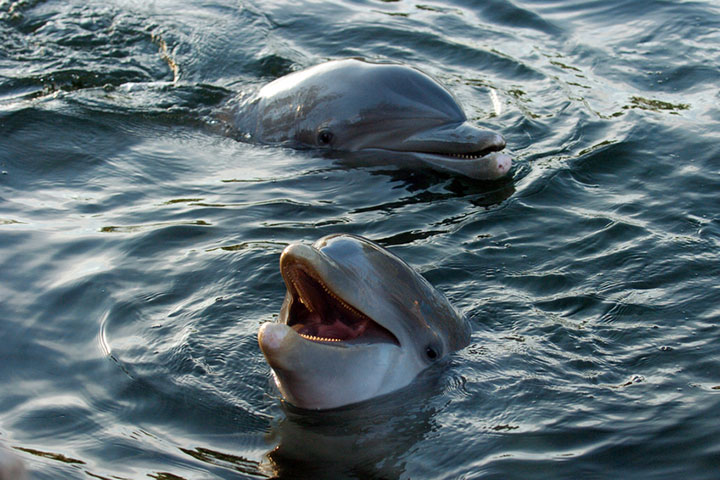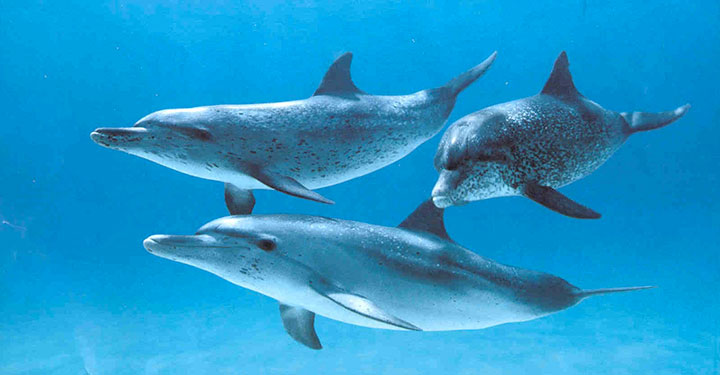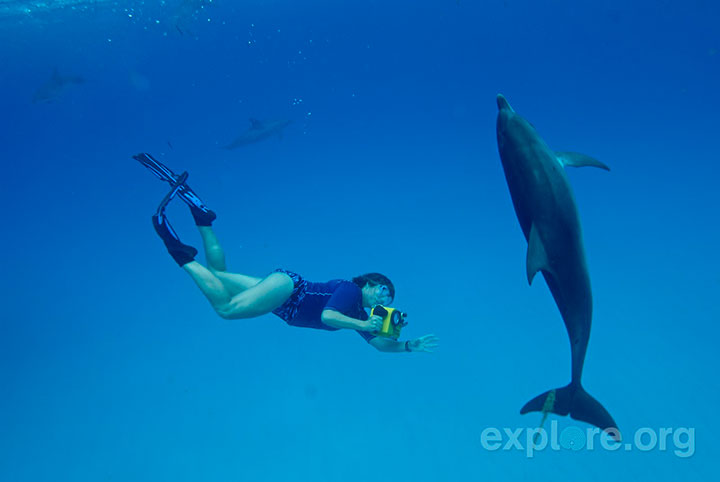Have you ever wanted to understand the language of dolphins? Well, it will soon be possible, thanks to a computer program developed by a scientist for over 4 years. For the first time, the device was able to translate a word during a conversation between a group these marine mammals. We tell you all about this amazing innovation.
Denise Herzing is an American biologist who has been studying the dolphins for the last quarter of a century. Every summer she goes to Bahamas to study a group of Dolphins in the Dolphin center. She also takes a computer specially designed to translate the language of dolphins. This machine is named as CHAT: Cetacean Hearing And Telemetry. For the first time, the program translated one word: “Sargasso”, name of a kind of common algae in the waters of this region. The computer gave the name using the voice of Denise who struggled to believe it for a moment. She said that the mission would ultimately be successful.
Despite the extraordinary nature of this discovery, keep in mind that nothing is certain.”Sargasso” may have been pronounced only once. In order to prove this thing it is important that the word is repeated many more times. So, when Denise showed dolphins the seaweed and encouraged them to emit the whistle again, the sound they produced was identical in structure, but with a higher frequency. The research could not continue after the summers. Nevertheless, the team of Wild Dolphin Project is already thinking about summers of 2014.
The computer CHAT was designed by Thad Starner, an engineer at the Georgia Institute of Technology, who has also partly worked as the one of the main inventors of the famous Google Glass. The machine uses specially developed algorithms to analyze dolphin whistles and translate them into words. It is also capable of counting the number of word occurrences in a conversation. It is important to differentiate between the same word used in isolation or in the middle of a sentence. In both cases, it will not have the same meaning. Scientists believe that they can gradually decipher the language of dolphins.
Other experts are more skeptical. They believe that communication between individuals of the same species is mainly by gestures or language elements very simple and sometimes imperceptible to external beings. However, the dolphins to use a large number of very different sounds to communicate, which would mean they “speak” a complex language consistent with the fact that they have a better brain. During the famous summer of 2013, CHAT had managed to differentiate 8 different language structures from 73 different dolphin whistles (some are also specific to the mother and baby). The study is still in its infancy but there may be considerable advancement in the next couple of years.
Still, Denise Herzing will be presenting her results at a conference to be held in Florence in May. Despite all the questions that his project raises, the biologist is not the only one working on this type research. These “Artificial Intelligence” algorithms have already being used by other scientists interested in primates, for example. The communication of the great apes, their language and gestures could also be decrypted soon.
The work of Denise really captivated us. We hope it will succeed in fully deciphering the language of dolphins in the near future. The thought that one day we will be able to talk with dolphins makes us excited. Do you think one day we will be able to communicate with the animals?



